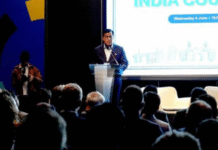New Delhi–India has substantially improved its rank in the Global Gender Gap index — moving from 108th to 87th position within a year, according to a report released by the World Economic Forum (WEF) on Wednesday.
Neighbour Pakistan, meanwhile, remains at the second last position, at rank 143 out of 144 countries.
Last year, the index placed it at 144 in a list of 145 countries. Both years, Pakistan was ahead only of Yemen.
Among immediate neighbours, Bangladesh took the top position at 72nd rank — ahead of India. Sri Lanka stands at 100, Nepal at 110, the Maldives at 115 and Bhutan at 121.
However, when it comes to women’s health, India is the third last, and as per the report, due to the situation in India and China, this gap is wider than it was in 2006.
India ranks 142nd in terms of ‘health and survival’ of women, while China is at the 144th spot.
In the South Asia region, India is ranked second in terms of gender parity, next only to Bangladesh.
The situation is not good In terms of economic participation of women, with India ranking 136th, ninth from bottom. The countries with lower ranking than India in this category include Iran, Yemen, Saudi Arabia and Pakistan.
Slightly better in the field of women’s education, India is at the 113th position, while in political participation of women it stands at the 9th rank.
The Global Gender Report by WEF said India had reported “progress this year on closing the gender gap with regard to wage equality and across all indicators of the Educational Attainment sub-index, fully closing its primary and secondary education enrolment gender gaps”.
However, it also sees some regression on women’s estimated earned income and the country “continues to rank third-lowest in the world on Health and Survival, remaining the world’s least-improved country on this sub-index over the past decade”, the report said.
Gender gaps in the fields of economic participation and health are the most challenging, and at current rates it will take 170 years to fill.
“… The most challenging gender gaps remain in the economic sphere and in health. At the current rate of change, and given the widening economic gender gap since last year, it will not be closed for another 170 years,” the report said.
The report also said that the economic gender gap this year has reverted back to where it stood in 2008, after a peak in 2013. Progress towards parity in the key economic pillar of gender has slowed dramatically with the gap — which stands at 59 percent — now larger than at any point since 2008.
The South Asian region, meanwhile, is lagging behind Sub-Saharan Africa, though it is better than the Middle East and North Africa.
Pakistan came last in the list of South Asian nations, and Bhutan was second last.
“With an average remaining gender gap of 33 percent, the South Asia region is the second-lowest scoring on this year’s Global Gender Gap Index, ahead of the Middle East and North Africa and behind the Sub-Saharan Africa region,” the report said.
Bangladesh and India are the top-ranked countries in the region, having closed just under 70 per cent and 68 per cent of their overall gender gap, respectively.
The lowest-ranked countries — Bhutan and Pakistan — have closed 64 per cent and 56 per cent, respectively, of their overall gender gap.
“No country in the region has fully closed its Educational Attainment gender gap, and only one country, Sri Lanka, has fully closed its Health and Survival gender gap,” the report added.






